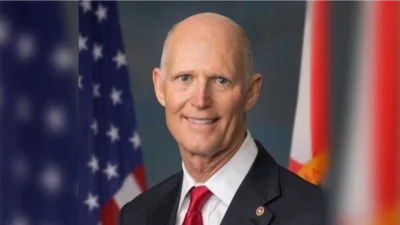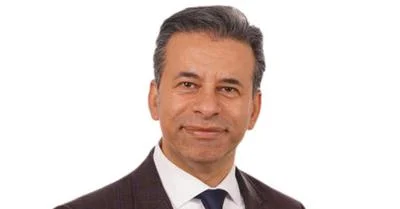Introduced by Myron Brilliant, USCOC Executive Vice President and Head of International Affairs.
Thank you, Myron, for the kind introduction. It is always a pleasure to be here at the Chamber.
Thanks also to the U.S.-India Business Council for the opportunity to participate in your 44th Annual Meeting. And thank you for your efforts and dedication to enhancing the Economic strategic ties between our two democracies.
Congratulations to Prime Minister Modi on achieving a strong and decisive mandate from the people of India for a second term in office. As President Trump said, we look forward to working with the Prime Minister and his administration to address our mutual trade opportunities, and investment potential.
As some of you may know, the Commerce Department just completed its sixth annual SelectUSA Investment Summit, held over the past three days, just a short distance from here, up Connecticut Avenue. It was an unequivocal success, with a record number of attendees: We had to turn people away it was so popular.
There was an impressive delegation from India, comprised of 97 executives who are considering investing in the United States. India had the fourth-largest delegation of the 78 countries represented at the SelectUSA Investment Summit. India’s FDI into the United States totaled $13.1 billion at the end of 2017. If you are in the audience here, and attended the SelectUSA Summit, thank you.
The SelectUSA event has generated $104 billion in new investments since it started, and it is our country’s biggest venue for hosting foreign investors. The message we sent to delegates is that the United States is the best place in the world to invest, and that the country is open for business.
This Administration has been addressing a more balanced and reciprocal trade relationship not only with India, but with all of our trading partners around the globe. The United States is the least protectionist country in the world, and we have the trade deficit to prove it. Yet other countries are highly protectionist and have huge trade surpluses.
The United States has zero tariffs on 61 percent of the total value of our imports, encompassing more than 17,000 categories of products. On thousands of additional products, our tariffs are lower than what other countries impose. For example, India’s average applied tariff rate of 13.8 percent remains the highest of any major world economy. It has a 60 percent tariff on automobiles, and 150 percent on alcoholic beverages. On motorcycles, it is 50 percent while ours is just 2.4 percent. Its bound tariff rates on agricultural products average 113.5 percent, and are as high as 300 percent.
High tariffs, non-tariff barriers, and unfair trade practices by our global partners have cost our nation entire industries, good-paying jobs, and lost innovation. These protectionist practices also breed companies in places like India that have not become globally competitive, and therefore hurt local economies.
Back in November 1975, President Nixon designated India as a beneficiary developing country for purposes of the Generalized System of Preferences. That was just a few weeks after the USIBC was formed at the request of the U.S. and Indian governments to advance our commercial ties. No one at that time could have predicted that in four decades India would become the world’s third largest economy with a GDP growth rate projected to reach 7.3 percent this year. Nor could anyone have foreseen that by 2018 bilateral trade between our countries would total $142 billion, and that the United States would not only have a goods deficit with India of $21 billion, but also have a services deficit of $3 billion. This is a real imbalance.
U.S. companies produce and offer innovative, world-class goods and services. And they are enthusiastic about doing business with India.
Last month, I led a delegation of more than 100 U.S. companies to our Trade Winds Conference and Trade Mission in New Delhi. While there, I spent an hour with Prime Minister Modi a week before the election results were finalized.
I hope that now that he has received a strong re-election mandate, he will carry through on the reforms he and I discussed. Even more important than specific items is the mindset of moving toward a more open economy.
The United States is India’s largest export destination; while India, with a population of 1.35 billion people, is only our 13th largest export market.
This imbalance is due — importantly — to overly restrictive market access barriers.
I explained to the Prime Minister and others while I was in New Delhi that the U.S. Trade Representative would hold off on its GSP decision until after the election, so that it would not interfere with them; but that the USTR’s substantive concerns needed to be addressed in order to avoid a possible negative decision.
They were not addressed and, therefore, because India “has not assured the United States that it will provide equitable and reasonable access to its market,” President Trump terminated India’s GSP designation as a beneficiary development country effective on June 5.
We will continue to work diligently with the Indian government and our private-sector partners to eliminate barriers to U.S. products.
During my former career, I made a number of major investments in India, and even owned an Indian airline: SpiceJet. That experience has helped inform my understanding of the challenges U.S. companies face in the Indian market.
U.S. industry is confronted by both tariff and non-tariff barriers, including E-commerce rules; data localization restrictions; price controls on medical devices and pharmaceuticals; and tariffs on ICT products. These barriers, some of which are new, impede the development of viable commercial relationships.
For U.S. companies, there is little predictability, transparency, and consistency of regulations.
But we also know that India has been making progress.
In the World Bank’s Ease of Doing Business report, India climbed an impressive 23 spots this year, to rank 77 out of 190 countries. We are encouraged by India’s efforts to improve the business climate and attract investment at the sub-national level.
Many U.S. companies find it advantageous to take the approach of working through their states to establish partnerships and identify customers in India. For this reason, we are eager to advance our cooperation with U.S. and Indian states to open trade and investment opportunities for businesses in both countries.
We are working through the U.S-India Commercial Dialogue to strengthen trade investment ties though the U.S.-India State Spotlight Series.
We appreciate USIBC’s leadership role in promoting greater trade and investment engagement among U.S. and Indian states, including making it a central topic of the Council’s current program.
So, thank you for hosting this Ideas Summit, and for your commitment to promoting the U.S.
India commercial relationship. We welcome your thoughts and recommendations as we strive to open new opportunities for businesses that will create jobs in both India and the United States.
Hopefully, you will develop some specific items that could reasonably be accomplished in the very near term and set a path toward more extensive longer-term reforms. We have work ahead of us.
But I, myself, am planning another trip to India in the near future, and I will use that as another opportunity to advance your ideas.
A plethora of opportunities for both nations will always make it possible for us to overcome any obstacles. We have a lot in common: Two vibrant democracies; a rich heritage together; and many years ahead of good tidings. Thank you, and I look forward to continuing our discussions.
Source: U.S. Department of Commerce








